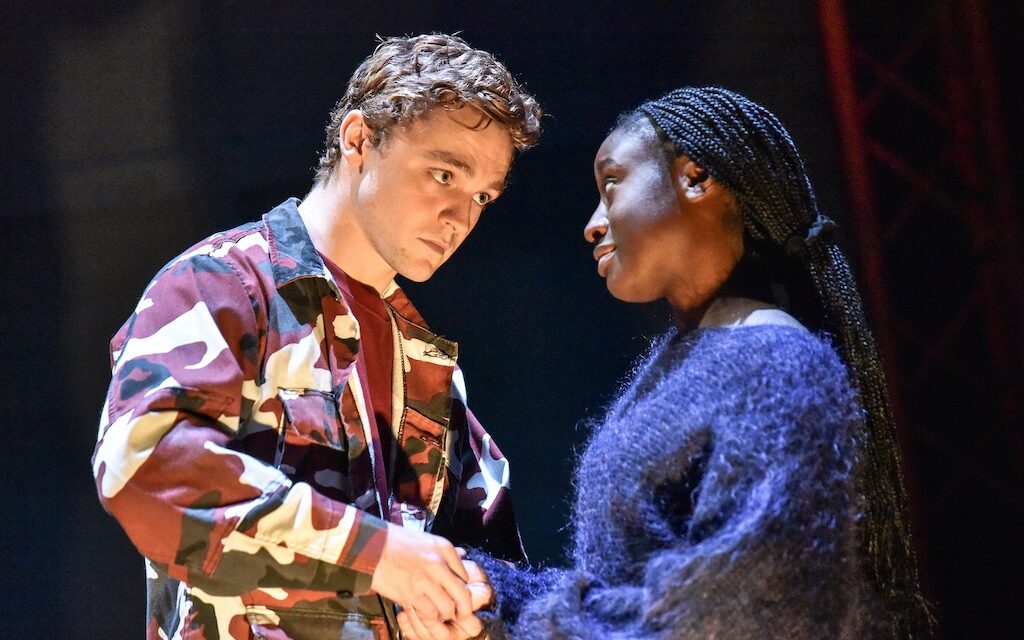
7 – 11 March
Malorie Blackman’s young adult novel about racism was published in 2001 and is already a classic. The premise is simple and powerful. Blacks, the Crosses, control society, while Whites, the Noughts, live as second- class citizens. The world it presents, Albion, is both recognizably English and boldly speculative, and the book speaks out against every form of human division and alienation. Noughts and Crosses was dramatized by Pilot Theatre Company in 2019, and the strong characters and fast plot work well on stage.
The adaptation by Sabrina Mahfouz is pacey and slick, focussing on action and dialogue, avoiding long speeches, allowing the characters to reveal their inner lives through what they do and say. Nor does the production make any concession to a youthful audience. There is plenty of violence, cruelty and deep intimacy, yet none of these is gratuitous or sensationalised. The stark savagery of what we witness is often shocking, and the political and personal revelations go straight to the heart. The two principals, Effie Ansah (Sephy) and James Arden (Callum), give riveting performances in their first leading roles. In both cases, the transition from the explosive teenage years to saddened maturity is deftly drawn.
In an evening of powerful scenes, several linger in the mind. There is a tense moment of immobility and silence when Callum’s father stands at the gallows in his orange boiler suit, his family lined up in front of their television screen to watch his execution. Elsewhere, the message rings out through movement as when the female gang of teenage Crosses turn on the Nought boys with a vicious taunting that rapidly escalates to brutality. As the boys cower together, desperate to be ignored, we are reminded that racism is not the only despicable ideology to be subverted here and that human oppression only feeds on itself.
Designer Simon Kenny has created a dreamlike set of flat squares, inspired by infrared photography, to be used flexibly for both interiors and exteriors. The squares also serve as display boards for TV news and political announcements. Sound and light shift with changes of mood. Tables and chairs are carried in and out to furnish the school buildings, the different homes, the prison cell, the bunker. Such transpositions are seamlessly effected, even balletic, as when the swaying bodies of the ensemble represent the waves on the beach where Seffy and Callum meet. Thus, with economic resources, worlds are created onstage in the best tradition of visual theatre.
All the performances are distinct and strong. If there is one shortcoming, it is the quality of the diction and projection, particularly among the younger, less experienced actors who have yet to perfect the skill of speaking softly while still ensuring they can be heard. Sadly, some of the lines in the quieter moments were lost to this reviewer. It should be said that this difficulty is not likely to have affected most of the youthful audience. And, overall, it would be churlish to find much fault. It’s rare to see a theatre packed with children and young people, rapt with concentration for over two hours. All is forgiven where there is this level of theatrical magic.
★★★★☆ Ros Carne, 8th March, 2023
Photo credit: Robert Day


